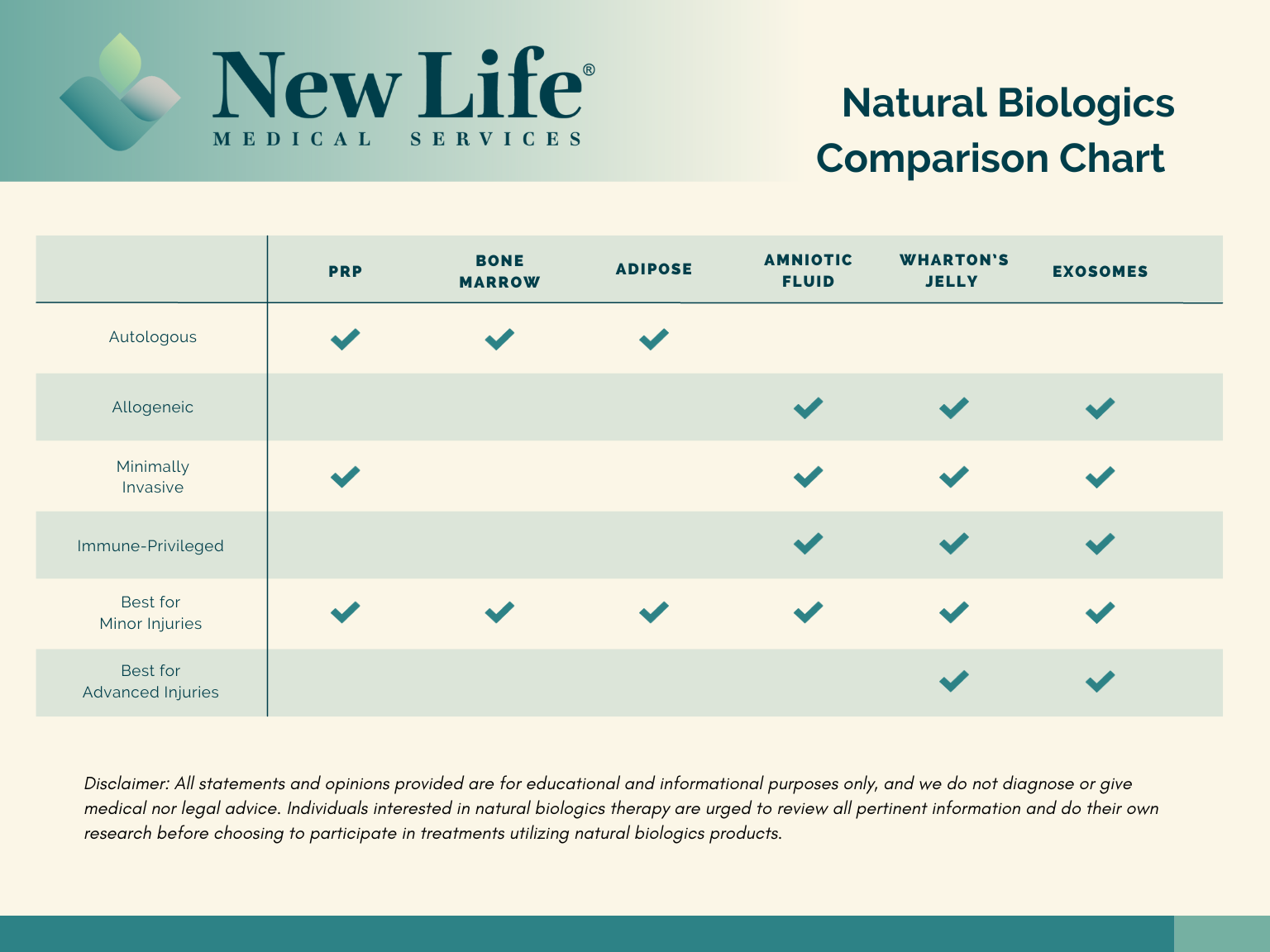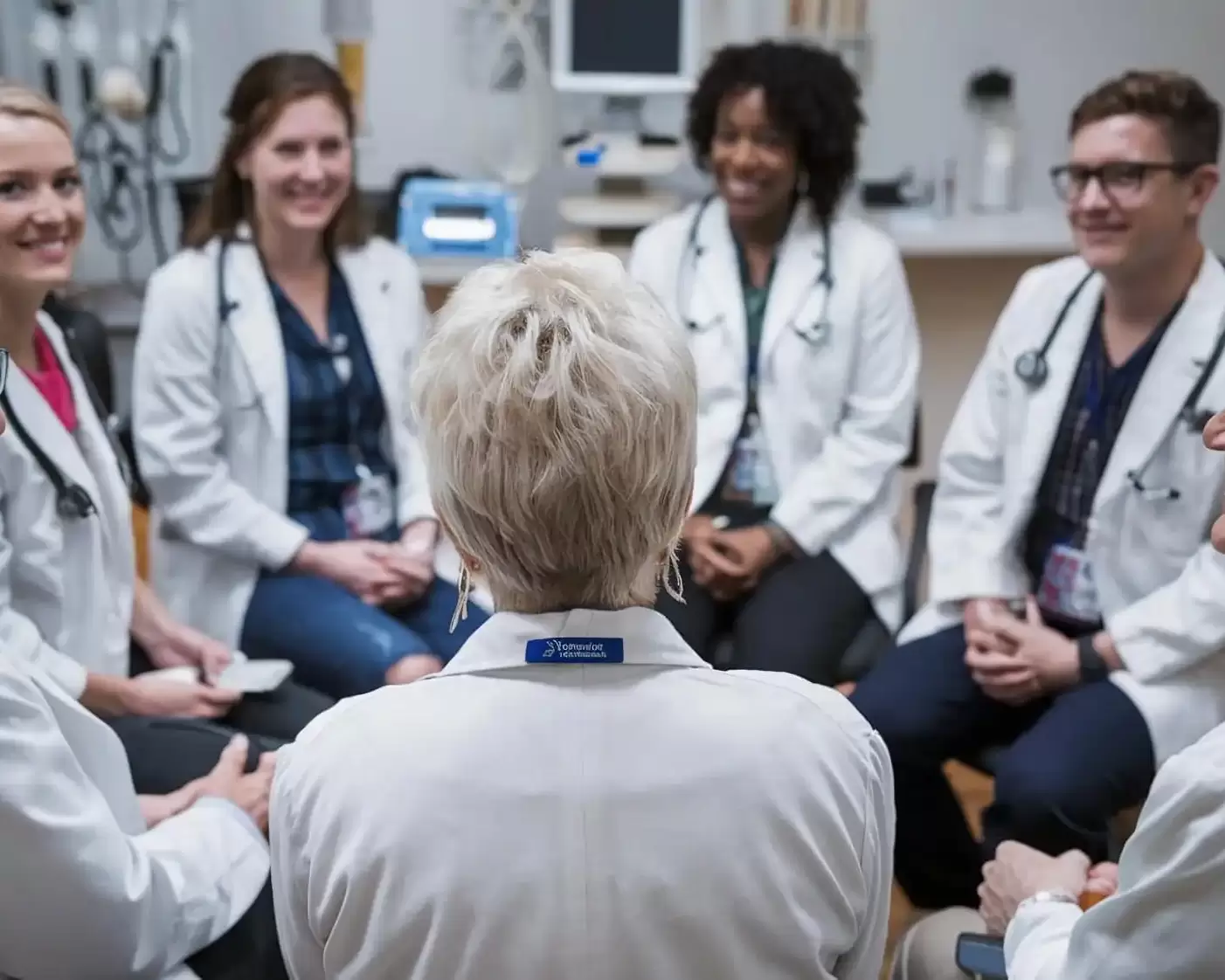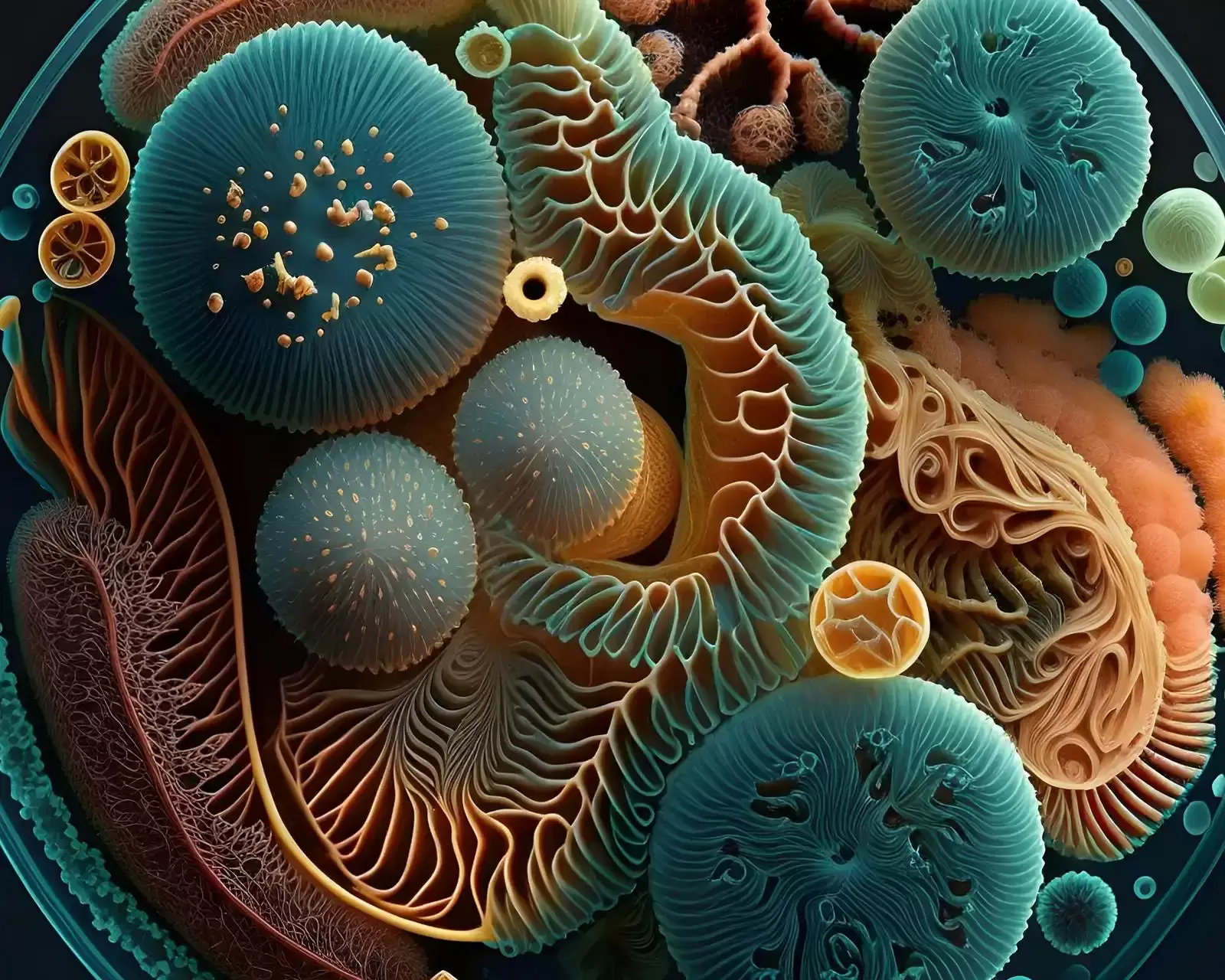- Home
- Uncategorized
- What is Natural Biologics?
What is Natural Biologics?
What is Natural Biologics?
We spend our youth living life to the fullest and creating memories that build the foundation of who we are. As time passes and our bodies grow older, the ability to live life to the fullest can sometimes be hindered by the effects of aging. When a body that was once capable of anything begins to fail, making a care decision can become confusing. Often, surgical procedures can be the first line of treatment introduced to patients. Though sometimes a necessary treatment option, not all conditions are beyond regeneration. Natural biologics may be a less invasive surgery alternative, eliminating potential hospitalization, weeks of downtime, and sometimes physical therapy.
So… what is natural biologics?
Natural biologics refers to treatment options that help enhance the body’s natural ability to heal. We are all born with components required to initiate healing and recovery. These components include cells, cytokines, proteins, collagens, elastin, hyaluronic acid, and much more. At the time of birth, these components are in their greatest abundance but will continue to decline as we age. Think of how fast children recover from injuries versus adults. Slower recovery for adults results from a decrease in natural healing components.
Natural biologics treatments aim to increase those natural healing components in the body by reintroducing your body’s own components (autologous) or by introducing new components from a donor (allogeneic). Choosing between the two options depends on the patient’s age and health, as individuals who are older or in poor physical health may produce inferior component amounts. Components derived from donor sources may show more promise, as treatments are typically derived from discarded birth tissues at delivery. Birth tissues are rich in healing components, containing the most robust collection of natural healing elements. It is also important to note that birth tissue products are non-controversial, meaning there is no harm to the mother or baby.

Treatment Options:
Autologous: Derived from you.
Platelet-Rich Plasma (PRP): PRP is cultivated by drawing a patient’s blood and spinning it down in a centrifuge to separate the platelet-rich plasma from the rest of the blood. The resulting “liquid gold” is reinjected into the body to create a healing environment. This form of natural biologics can be effective for patients with minor injuries that can be repaired easily. However, this process will not be as effective for older patients who have already seen a reduction in natural healing. Additionally, lifestyle factors such as smoking, unhealthy diet, and substance abuse can also decrease the effectiveness of PRP treatments as these habits further decrease healing components.
Bone Marrow Aspirate: This invasive, painful process begins by putting a patient under anesthesia and drilling into the bone to obtain bone marrow. Many natural biologics providers swear by these processes; however, like PRP, success depends on the patient’s age, health, and lifestyle. Additionally, invasive procedures like this have a higher probability of infection than other less invasive alternatives while requiring an intense recovery period.
Adipose Derived Stem Cells: Adipose (fat) treatments are collected via a procedure that mimics the process of liposuction. Like Bone Marrow, adipose is done under general anesthesia and is an invasive process. Once the fat is collected, the cells are separated from the tissue and reinjected into the patient. Like PRP and Bone Marrow, Adipose treatments’ success depends on the patient’s health, age, and lifestyle. Additionally, the patient has more risk of infection when choosing this more invasive procedure paired with a more extended recovery period.
Allogeneic: Donated to you.
Amniotic Fluid Therapy: Collected at the time of birth, Amniotic Fluid Therapy is an ideal treatment for individuals who have sustained injuries that disrupt day-to-day functionality. Physicians and clinicians have utilized amniotic fluid therapy to treat many conditions, from orthopedic to wound care. Amniotic fluid contains a variety of growth factors, cytokines, and anti-inflammatory proteins that may promote tissue repair, reduce inflammation, and stimulate cellular regeneration. As amniotic fluid is collected at the time of birth, it is abundant with rich, more robust components than autologous sources. Additionally, as amniotic fluid is immune-privileged (limits or suppresses immune response), the risk of rejection is extremely rare. Amniotic fluid therapies are typically done in a physician’s office with minimal if any, downtime after treatment.
Wharton’s Jelly: Derived from the umbilical cord at the time of birth, Wharton’s jelly is primarily composed of a gel-like substance made up of hyaluronic acid and a network of collagen fibers. Its unique properties make it well-suited for its role in protecting and supporting the umbilical cord. Believed to contain a population of mesenchymal stem cells that have the capacity to differentiate into various cell types, as well as many other secreted growth factors and cytokines, Wharton’s Jelly is considered to be the most valuable source to enhance the healing of various tissues, including bone, cartilage, skin, and nerve tissue. Wharton’s Jelly is immune-privileged with little risk of rejection and minimal, if any, downtime after an in-office treatment.
Exosomes: Exosomes are small, membrane-bound vesicles that play a crucial role in intercellular communication within the body. Containing a variety of bioactive molecules, including proteins, lipids, nucleic acids (such as RNA), and signaling molecules, Exosomes serve as vehicles for transferring these molecules from one cell to another, allowing cells to influence the behavior and function of neighboring or distant cells. Though Exosomes can be collected or isolated from various biological fluids and cell cultures using specialized techniques, it is most robust when collected via the umbilical cord at birth. The exosomes within the umbilical cord are utilized for tissue repair and regeneration, signaling our cells to promote proliferation (increase in the number of cells through cell division), differentiation (transformation of unspecialized cells into specialized cells), and tissue healing in damaged or injured areas. Exosome treatments are ideal to increase cell communication and initiate repair when paired with another source of allogeneic therapy like Amniotic Fluid or Wharton’s Jelly. Like Amniotic Fluid and Wharton’s Jelly, Exosomes derived from the umbilical cord are immune-privileged with minimal risk of rejection.
Choosing which natural biologics therapy is the best fit varies for everyone. When selecting a natural biologics treatment, it is essential for patients to consult their physician to determine which application will result in the most superior outcomes.
For more information about natural biologics therapies, please get in touch with New Life Medical Services today!
You Might Also Like
What to Expect During a Natural Biologic Training Seminar
What to Expect During a Natural Biologic Training Seminar Attending a natural biologic training…
The History of Regenerative Medicine and Natural Biologics Applications
The History of Regenerative Medicine and Natural Biologics Applications Regenerative medicine has a…
What is Pain Medication Doing to Your Body?
How we feel dictates much of how we live our daily lives. In our youth, how we feel is more…




